Sabatier-Senderen's reduction.
Text Solution
This reaction involves the reduction of unsaturated hydrocarbons to saturated hydrocarbons in presence of Raney nickel as catalyst at 473-573 K. for example,
R−CH=CH2+H2AlkeneNi−−−−−−−→473−573KRCH2CH3Alkane
R−C≡C−H+2H2AlkyneNi−−−−−−−→473−573KRCH2⋅CH3Alkane
The reaction is also used in the manufacture of Vanaspati Ghee from edible vegetable oils.
|
Updated on:21/07/2023
Related Playlists
Similar Practice Problems
- Question 1 - Select One
The Sabatier-Senderens reduction is carried out by passing the vapors of organic compound mixed with hydrogen over _______ catalyst at 200−300∘C.
ANiOBPtCPdDNi - Question 1 - Select One
Hydrogenation of alkenes and alkynes takes place in presence of certain catalysts. In sabatier-Senderen's reaction, the addition of hydrongen taken place in presence of nickel catalyst. Controlled hydrogenation of alkyne in presence of Lindlar's catalyst gives cis-alkene. Non terminal alkynes are reduced by Na or Li metal dissolved in liquid NH3. In this reaction trans alkenes are formed.
Q. In which of the following the reaction is most exothermicA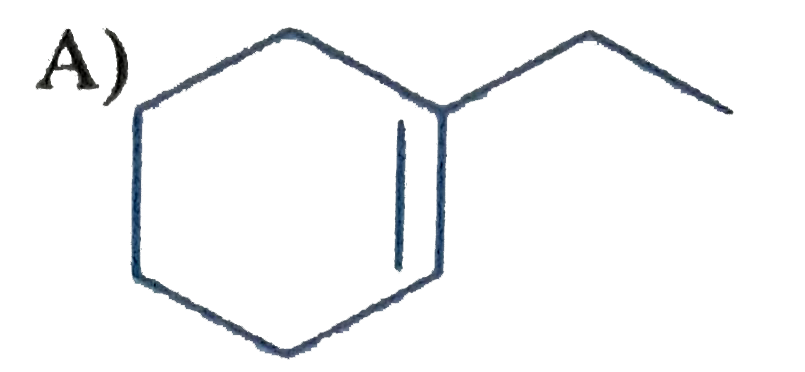 B
B C
C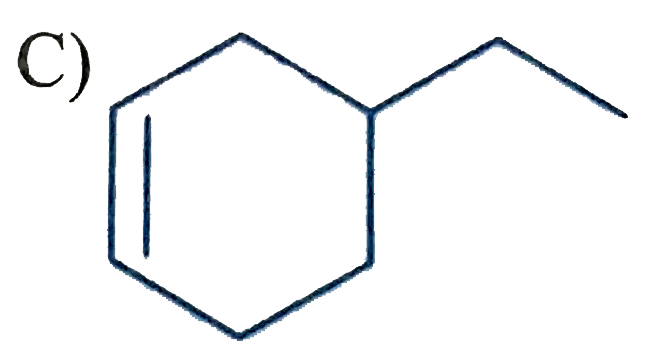 D
D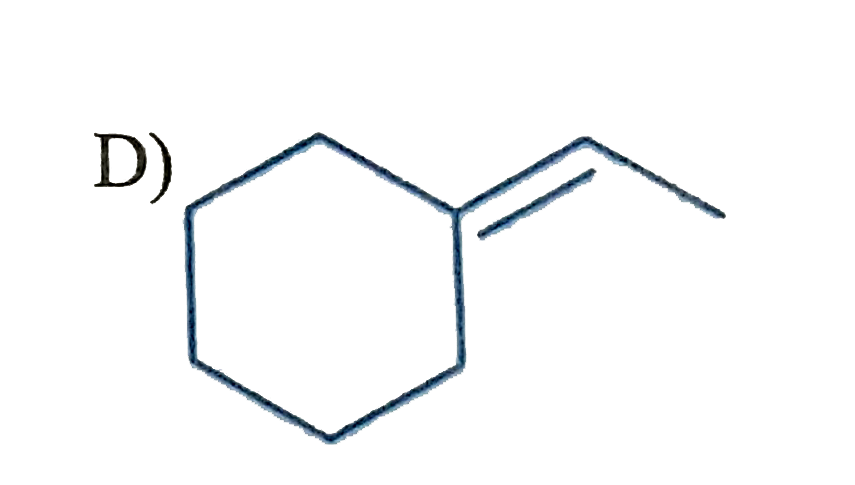
- Question 1 - Select One
Hydrogenation of alkenes and alkynes takes place in presence of certain catalysts. In sabatier-Senderen's reaction, the addition of hydrongen taken place in presence of nickel catalyst. Controlled hydrogenation of alkyne in presence of Lindlar's catalyst gives cis-alkene. Non terminal alkynes are reduced by Na or Li metal dissolved in liquid NH3. In this reaction trans alkenes are formed.
Q. The product of the following reaction is
 A
A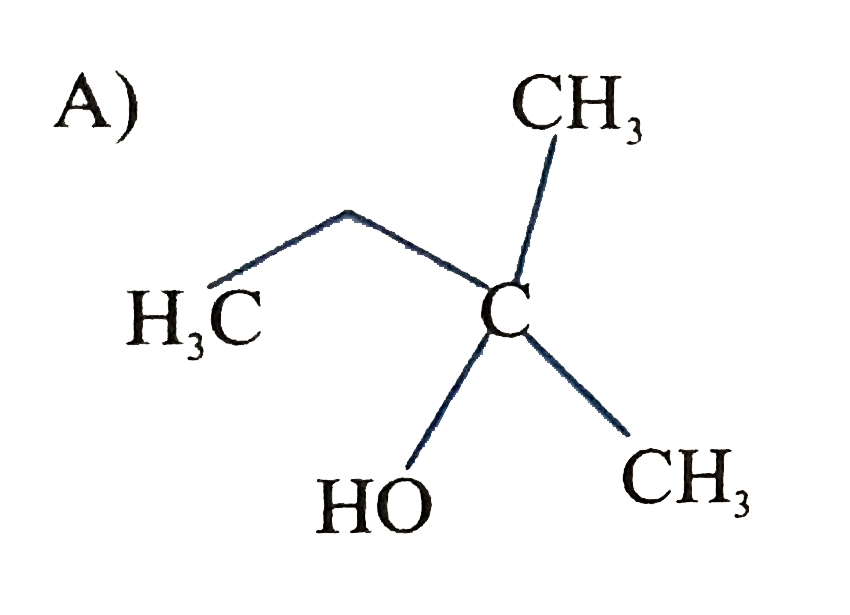 B
B C
C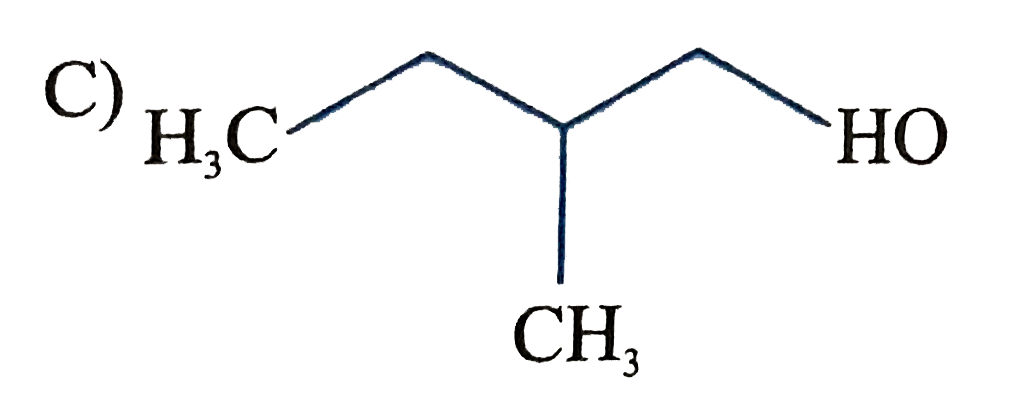 D
D
- Question 1 - Select One
Hydrogenation of alkenes and alkynes takes place in presence of certain catalysts. In Sabatier Senderen's reaction, the addition of hydrogen takes place I presence of Raney nickel catalyst. Platininm and palladium can also be used as catalyst and used in finley divided state. Experimentally, it is observed that less crowded alkenes adsorb H2 with faster rate. Controlled hydrogenation of alkyne H2 with faster rate. Controlled hydrogenation of alkyne in presence of Lindlar's catalyst yields cis product i.e., 'cis' alkene. Thus, in presence of Lindlar's catalyst 'syn' addition takes place. The relative rate of hydrogenation follows the order:

Non-terminal alkynes are reduced in presence of Na or Li metal dissolved in liquid ammonia. In this reaction, anti-addition of hydrogen results into the trans-product.
In which of the following cases, the reaction is most exothermic?A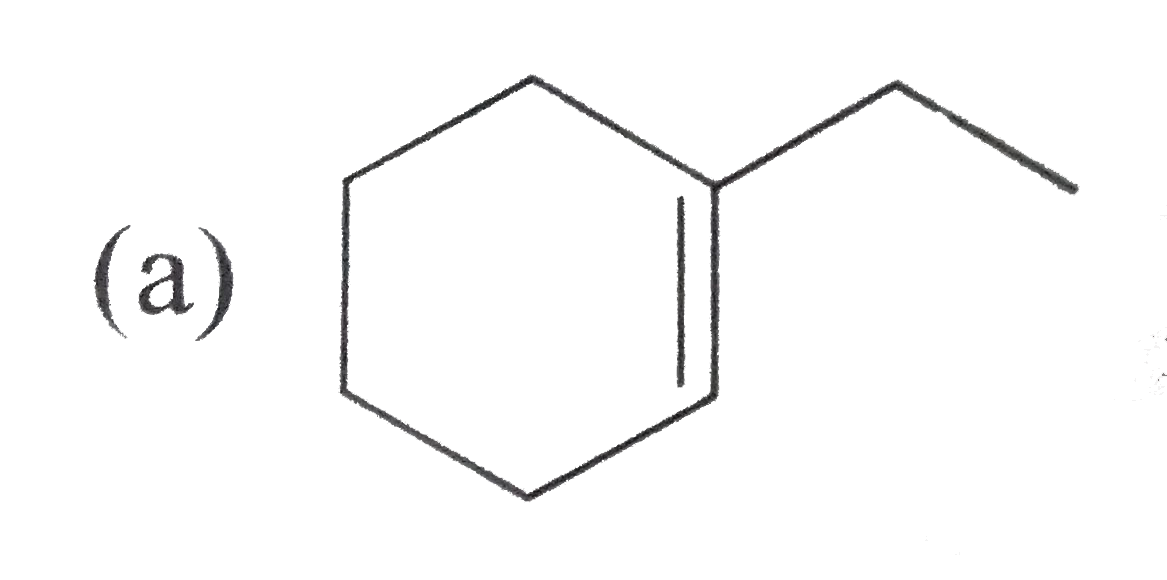 B
B C
C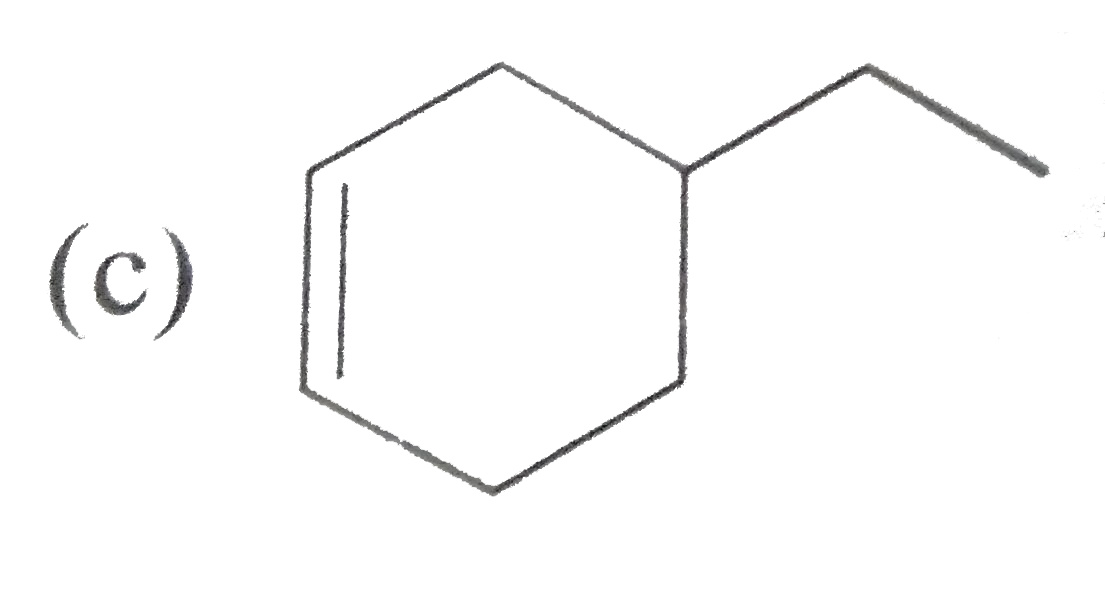 D
D
- Question 1 - Select One
Hydrogenation of alkenes and alkynes takes place in presence of certain catalysts. In Sabatier Senderen's reaction, the addition of hydrogen takes place I presence of Raney nickel catalyst. Platininm and palladium can also be used as catalyst and used in finley divided state. Experimentally, it is observed that less crowded alkenes adsorb H2 with faster rate. Controlled hydrogenation of alkyne H2 with faster rate. Controlled hydrogenation of alkyne in presence of Lindlar's catalyst yields cis product i.e., 'cis' alkene. Thus, in presence of Lindlar's catalyst 'syn' addition takes place. The relative rate of hydrogenation follows the order:

Non-terminal alkynes are reduced in presence of Na or Li metal dissolved in liquid ammonia. In this reaction, anti-addition of hydrogen results into the trans-product.
Answer the following questions:
The relative rate of catalytic hydrogenation of following alkenes is:
 AII gt III gt IV gt IBI gt IV gt III gt IICIII gt IV gt I gt IIDII gt IV gt I gt III
AII gt III gt IV gt IBI gt IV gt III gt IICIII gt IV gt I gt IIDII gt IV gt I gt III - Question 1 - Select One
Hydrogenation of alkenes and alkynes takes place in presence of certain catalysts. In Sabatier Senderen's reaction, the addition of hydrogen takes place I presence of Raney nickel catalyst. Platininm and palladium can also be used as catalyst and used in finley divided state. Experimentally, it is observed that less crowded alkenes adsorb H2 with faster rate. Controlled hydrogenation of alkyne H2 with faster rate. Controlled hydrogenationof alkyne in presence of Lindlar's catalyst yields cis product i.e., 'cis' alkene. Thus, in presence of Lindlar's catalyst 'syn' addition takes place. The relative rate of hydrogenation follows the order:

Non-terminal alkynes are reduced in presence of Na or Li metal dissolved in liquid ammonia. In this reaction, anti-addition of hydrogen results into the trans-product.
The product of the following reaction is:
 A
A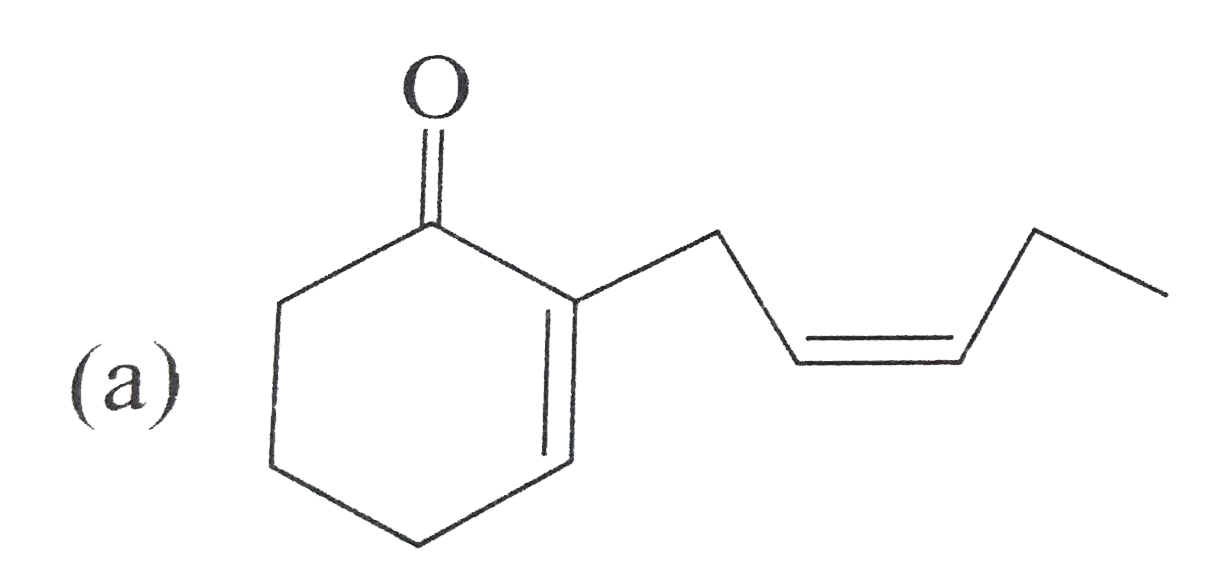 B
B C
C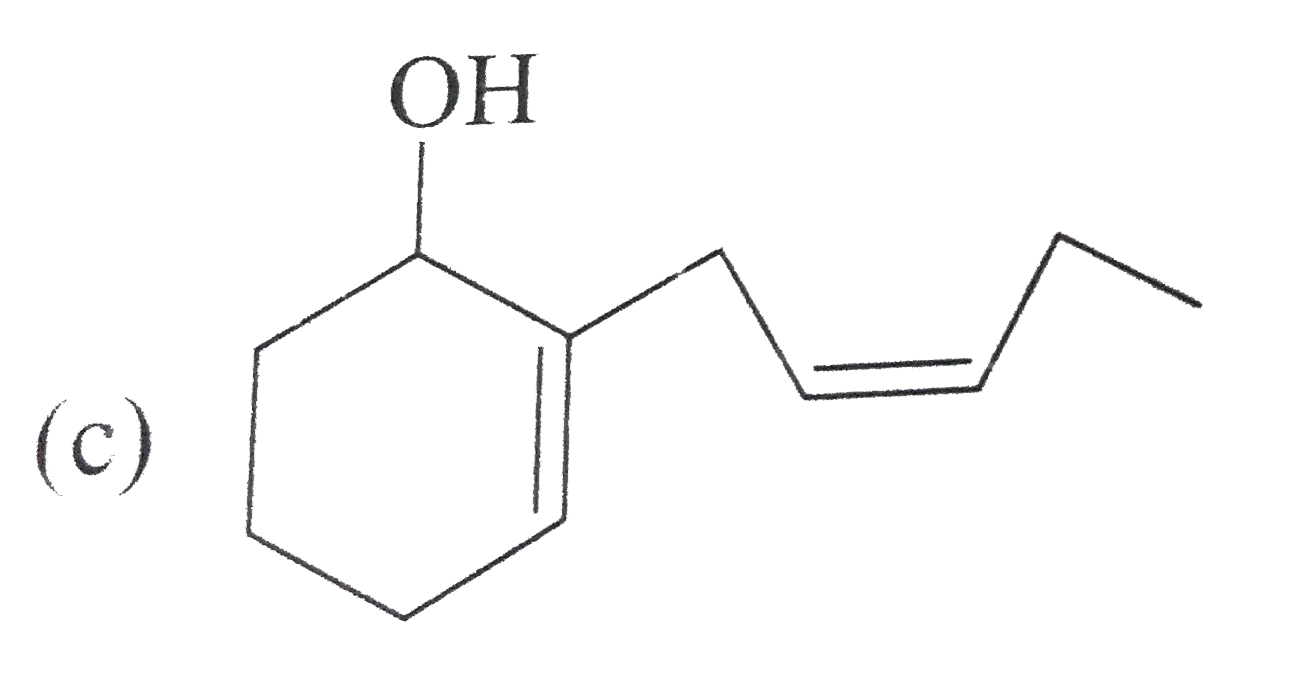 D
D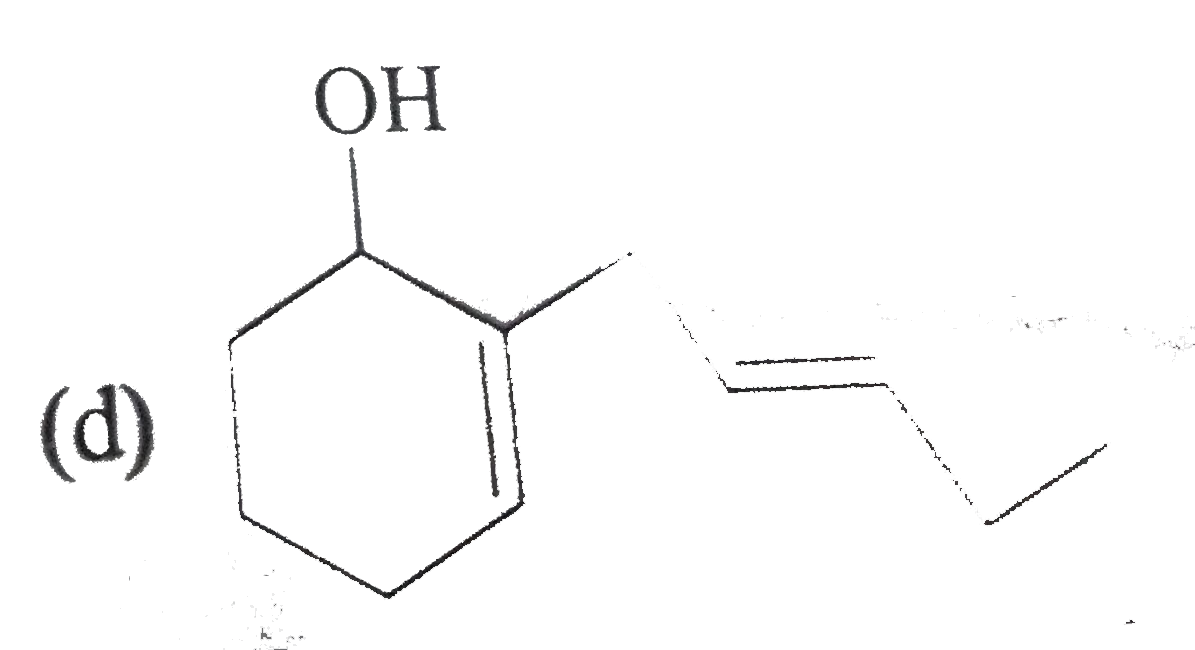
- Question 1 - Select One or More
Hydrogenation of alkenes and alkynes takes place in presence of certain catalysts. In Sabatier Senderen's reaction, the addition of hydrogen takes place I presence of Raney nickel catalyst. Platininm and palladium can also be used as catalyst and used in finley divided state. Experimentally, it is observed that less crowded alkenes adsorb H2 with faster rate. Controlled hydrogenation of alkyne H2 with faster rate. Controlled hydrognetation of alkyne in presence of Lindlar's catalyst yields cis product i.e., 'cis' alkene. Thus, in presence of Lindlar's catalyst 'syn' addition takes place. The relative rate of hydrogenation follows the order:

Non-terminal alkynes are reduced in presence of Na or Li metal dissolved in liquid ammonia. In this reaction, anti-addition of hydrogen results into the trans-product.
Powdered nickel is more effective than grannular nickel because:ASurface area of powdered nickel is maximumBFree valencies are large in numberCPowdered nickel increases the activation energy of the reaction.DPowdered nickel increases the intermolecular collision of reactant molecules. - Question 1 - Select One
Hydrogenation of alkenes and alkynes takes place in presence of certain catalysts. In Sabatier Senderen's reaction, the addition of hydrogen takes place I presence of Raney nickel catalyst. Platininm and palladium can also be used as catalyst and used in finley divided state. Experimentally, it is observed that less crowded alkenes adsorb H2 with faster rate. Controlled hydrogenation of alkyne H2 with faster rate. Controlled hydrogenation of alkyne in presence of Lindlar's catalyst yields cis product i.e., 'cis' alkene. Thus, in presence of Lindlar's catalyst 'syn' addition takes place. The relative rate of hydrogenation follows the order:

Non-terminal alkynes are reduced in presence of Na or Li metal dissolved in liquid ammonia. In this reaction, anti-addition of hydrogen results into the trans-product.
H3C−C≡C−CH3+H2Pd/CaCO3−−−−−−−−−→Boiling Quinoline(A)
The product (A) will be:ACH3CH2CH2CH3B C
C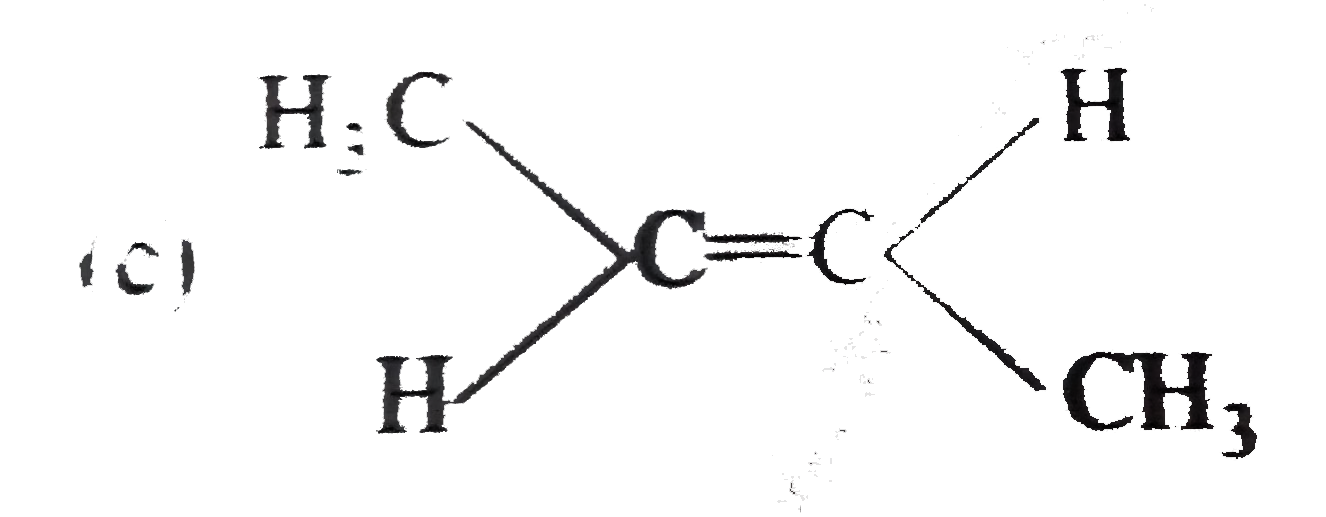 DCH3−CH2−CH=CH2
DCH3−CH2−CH=CH2 - Question 1 - Select One
Amtch List I with List I and select the correct answer from the given codes
List IList IIReaction Metals used A. Wurtz reaction 1.NiB.Sabatier senderen's reaction 2. Znc. Frankland reaction e. LiD. Corey -House synthesis 4. NaAABCD1234BABCD4123CABCD3241DABCD2423 - Question 1 - Select One
Hydrogenation of alkenes and alkynes takes place in presence of certain catalysts. In Sabatier Senderen's reaction, the addition of hydrogen takes place I presence of Raney nickel catalyst. Platininm and palladium can also be used as catalyst and used in finley divided state. Experimentally, it is observed that less crowded alkenes adsorb H2 with faster rate. Controlled hydrogenation of alkyne H2 with faster rate. Controlled hydrogenation of alkyne in presence of Lindlar's catalyst yields cis product i.e., 'cis' alkene. Thus, in presence of Lindlar's catalyst 'syn' addition takes place. The relative rate of hydrogenation follows the order:

Non-terminal alkynes are reduced in presence of Na or Li metal dissolved in liquid ammonia. In this reaction, anti-addition of hydrogen results into the trans-product.
Answer the following questions:
The relative rate of catalytic hydrogenation of following alkenes is:
 AIIgtIIIgtIVgtIBIgtIVgtIIIgtIICIIIgtIVgtIgtIIDIIgtIVgtIgtIII
AIIgtIIIgtIVgtIBIgtIVgtIIIgtIICIIIgtIVgtIgtIIDIIgtIVgtIgtIII

